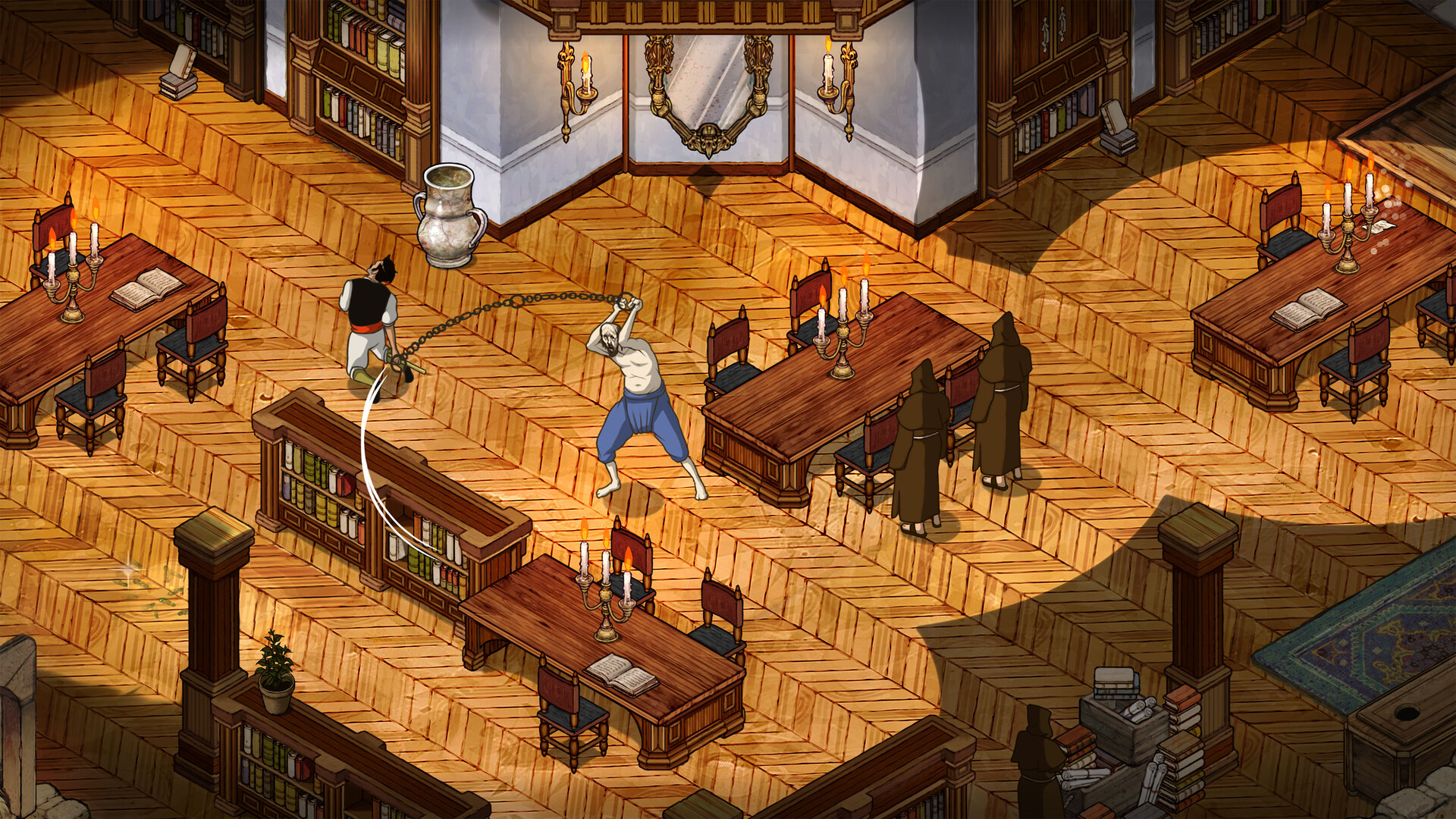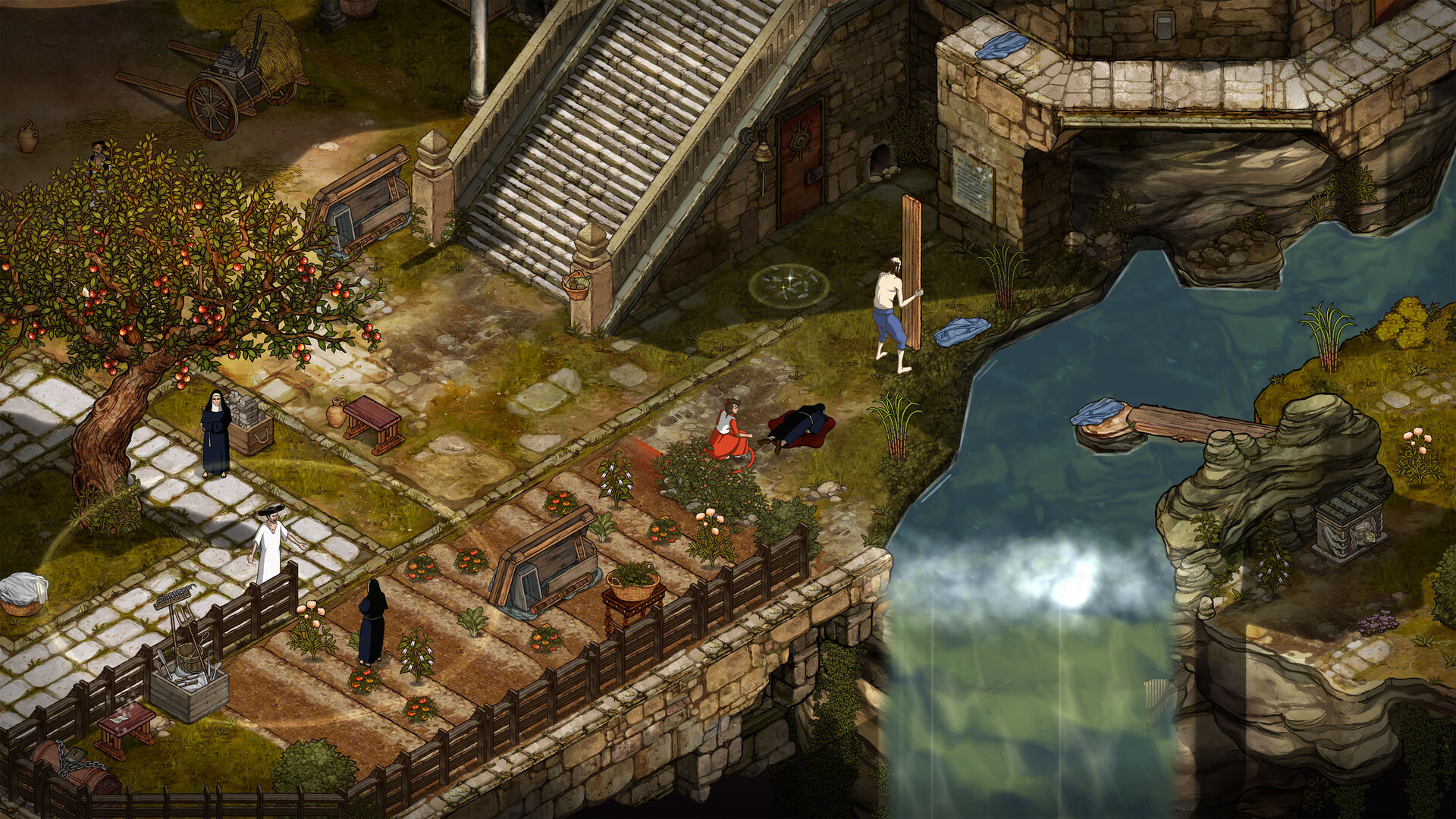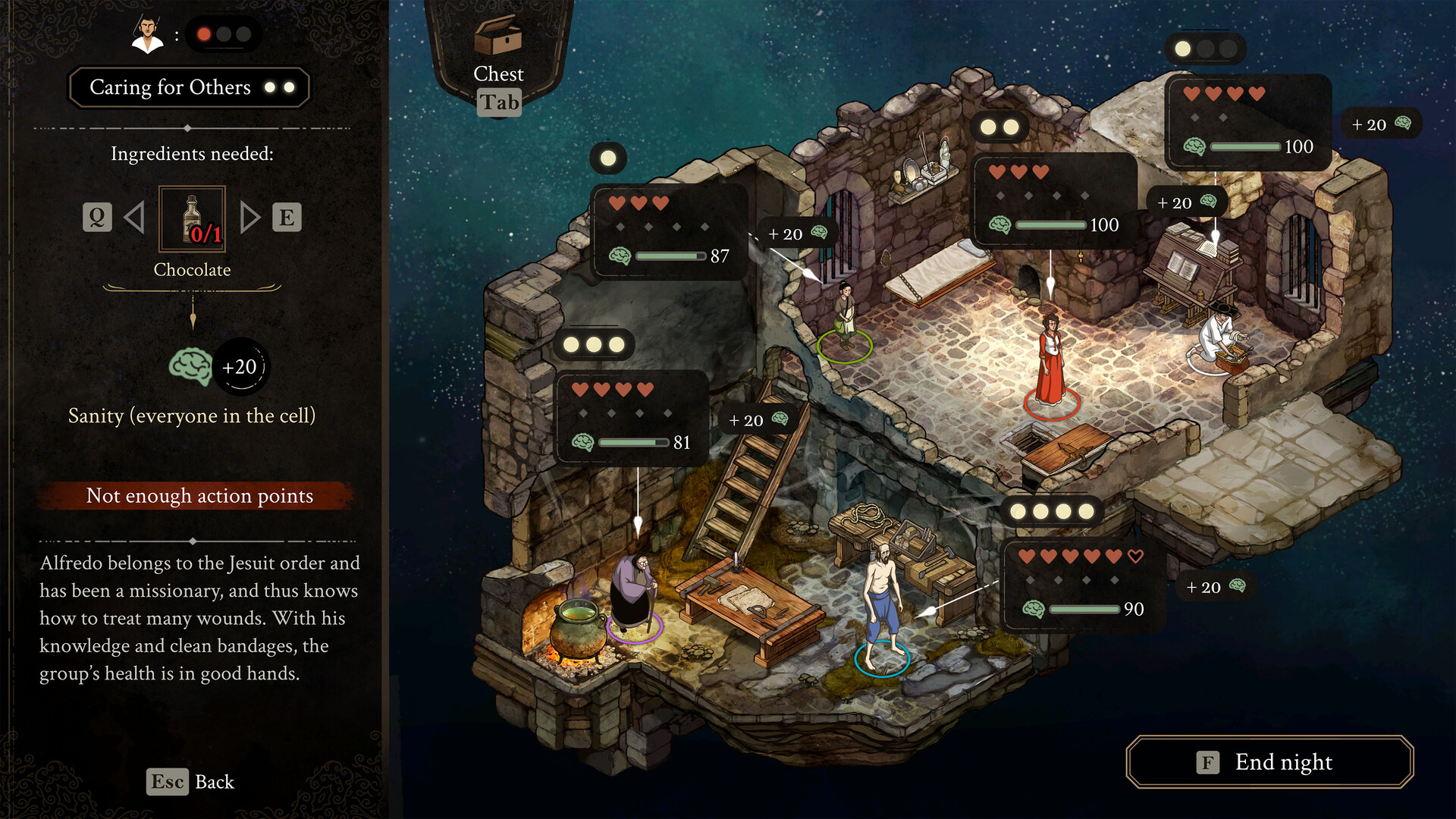The Stone of Madness is a game that tantalizes with its artistic vision and intriguing premise, but ultimately falls short of its potential due to frustrating technical shortcomings. The game boldly attempts to fuse the tactical depth of the Commandos series with parts of the nature of roguelikes, all while wrapped in a truly breathtaking visual package. While the ambition is admirable, the execution leaves a lot to be desired.

Could hang screenshots on my wall
Let’s begin with what absolutely shines: the art style. The hand-painted environments are nothing short of stunning. Each location is meticulously crafted, bursting with detail and a painterly quality that gives the game a unique and captivating charm. The character animations, though sometimes a little stiff, are equally impressive, showcasing a dedication to visual fidelity that is rarely seen in indie titles. From the crumbling walls of the asylum to the oppressive gloom of the surrounding landscapes, the game’s atmosphere is palpable and engaging. This visual splendor is easily the most compelling aspect of The Stone of Madness and a testament to the talent of the art team.

Good character design dragged down by unresponsive controls
Moving onto gameplay, the characters themselves are a strong point. Each playable inmate possesses their own unique skills and abilities, offering varied approaches to the stealth-focused gameplay. Experimenting with different combinations of characters and their particular playstyles proves to be a genuinely enjoyable experience. However, this strength quickly morphs into a frustrating hurdle. Managing more than a couple of inmates simultaneously feels incredibly clumsy. The controls, especially when trying to coordinate multiple actions, are often unresponsive and unintuitive. This disconnect between player input and on-screen action significantly hinders the tactical flow the game aspires to achieve.
The core gameplay loop, with its Commandos-esque strategic element and roguelike progression, is promising. Planning infiltration routes, utilizing each character’s abilities to their fullest, and dealing with the consequences of failure offers a satisfying level of challenge and replayability. Unfortunately, this good framework is undermined by technical issues beyond the poor controls. Interacting with the environment feels clunky and imprecise, making even simple actions like picking up items or opening doors frustrating. These technical inconsistencies frequently disrupt the flow of gameplay, pulling the player out of the immersive experience the art style desperately tries to conjure.

Deep and interesting storylines
Adding to the game’s intricate tapestry, the narrative of The Stone of Madness is surprisingly deep and compelling. The morally ambiguous themes it explores, with dark undertones on the nature of humanity, are both thought-provoking and engaging. The story unfolds in two entirely different ways, based on an early choice made by the player, encouraging multiple playthroughs to fully grasp the narrative intricacies. This split narrative allows for a diverse exploration of the characters and the asylum’s dark past, elevating the storytelling beyond typical genre expectations.
Ultimately, The Stone of Madness feels like a game with immense potential struggling under the weight of its technical shortcomings. It’s not a bad game by any means, but it also falls short of being truly great. The beautiful art direction and intriguing core gameplay loop are consistently hampered by poor controls and clunky interactions. The ambition and creative vision are clearly present, but the execution needed more polish.

Conclusion
Despite these flaws, one can’t deny the spark of something special within The Stone of Madness. It’s a game that deserves recognition for its artistic courage and ambitious attempt at genre blending. The hope is that the studio behind it gets another opportunity to craft a second stealth title, perhaps with a refined version of this game’s beautiful aesthetic. If they can iron out the technical wrinkles and nail the controls, the studio could produce a truly exceptional game. The raw potential is there, just waiting to be fully realized. For now, The Stone of Madness serves as a compelling example of how technical limitations can hinder the brilliance of a good idea.

Leave a Reply